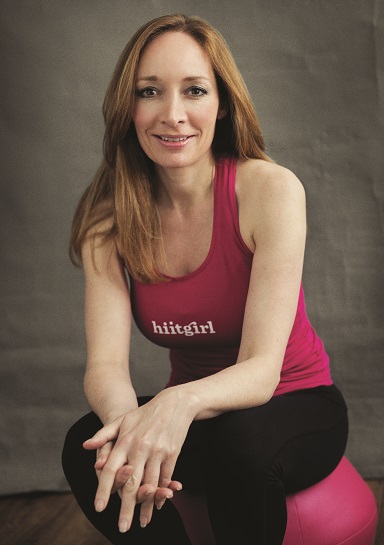What do clubs consider when devising their group X timetable? FitPro talks to a club, leisure centre and boutique offering to find out.
GLL (Greenwich Leisure Ltd) group X timetable
Wendy Edwards, national fitness classes manager, says:

Keeping up with trends is hit and miss – it might be exactly the same class type but ‘wrapped, branded and called something different’. Yet, if demand is there, we need to ensure we keep up with
competitors and deliver to our customers. At GLL, we review programmes weekly; if a class isn’t performing and a new class needs adding, there’s no point waiting until the end of the week, month or quarter. Being proactive is essential in how we evaluate and review our classes. Our centre teams are aware of the benefits of each timetabled class, so they can inform customers of how classes can help them achieve their goals.
• We build our group X timetable to ensure our variety of members, including older adults and juniors, can access classes within their typical usage times.
• We always have the ‘core classes’: group cycle, total body conditioning and yoga.
• Our classes perform seasonally and are delivered at the correct times throughout the year.
• Centres located in corporate districts have popular, short lunchtime classes and those in residential areas with an older client base are typically busier during mornings and afternoons.
• We identify products we think they’ll love, while being adaptable when changes occur. We are launching a mindfulness class, combat, and parent and baby yoga.
• Many of our centres are introducing virtual to complement the timetable.
HIITGIRL Boutique group X timetable

Susan Dyson, co-founder, says:
We started out as a boutique studio to create the best workout for busy women. We’re influenced more by customer needs and behaviour than trends. Our group X timetable is more focused than a typical gym timetable.
We’re not trying to be all things to all people; our customers can get their yoga or Pilates fix elsewhere. As one of the first boutique studios in London to offer HIIT-focused workouts, we benefited from the rise in popularity of HIIT and small group workouts.
• We refresh the timetable three times a year to coincide with summer, winter and spring.
• Keeping things the same for too long isn’t good for fitness progress and recovery and can lead to lower attendance.
• To attract busy mums, we created a ‘drop-in’ concept. Customers can come at any time within a 90-minute period and get their 30-minute workout. We time sessions to fit with school drop-off times.
• 12 weeks is a good session duration, along with minor content modifications each month.
• We believe operators shouldn’t spend lots of time and effort trying to change behaviour. It’s more efficient to have a deep understanding of your customers’ behaviour and look for opportunities to link exercise to existing behaviour patterns.
• We organise the timetable around three areas: 1. Regular classes that change exercise but don’t change format or branding (60% of timetable); 2. Occasional internal classes – a wide range of branded sessions rotated at every timetable change (e.g., trampoline based, barre, yoga inspired) (25% of timetable); 3. External – occasional guest instructors providing specialised sessions, such as themed yoga and professional dance, to keep things fresh (5% of timetable). (approximate figures)
St Peter’s Leisure Centre, Burnley group X timetable

Scott Bruce, area manager, says:
We have embedded a number of trends in our group X timetable. The CrossFit phenomenon goes from strength to strength and we took our team to sample it. This encouraged us to change routines on the gym floor and piggyback basic elements. We feel we have a social responsibility to engage families. We’ve seen an increase in members wanting to train as a family, especially functional
training, and have commenced family boot camp and gym floor SYNRGY360 sessions with great attendance levels.
• We have a strong, women-only class offering, with a wide variety of sessions, including Group Centergy, Box Fit and Glow Fitness. Dancelicious-type classes are a present trend and we’ve increased these classes.
• Gentle exercise classes such as aqua, Pilates and yoga are more popular during day-time hours, as they are highly attended by clients over 60. Indoor cycling is popular for members attending earlier.
• We’ve seen an upturn in our youth market, especially within after-school clubs. We utilise Snapchat to communicate with these users.
• The group X timetable is reviewed every quarter to keep it fresh. It’s important to allow classes to breathe and grow to ensure demand does not exceed capacity, but also don’t be afraid to change or remove a class that isn’t working.
• Our timetable covers three main elements – core, strength and cardio – at peak periods of mornings, lunchtimes and evenings, which can be a challenge, especially with space at a premium.
• We have developed our ball breaker session: three 30-minute sessions of HIIT, Hard and Heavy followed by Abs Blast, where members can attend a separate 30-minute session or take up the 90-minute challenge.
• When it comes to value and member expectation, we still have a mentality of should a 30-minute class be cheaper than a 45min/one-hour class?
New ETM qualification for group X
Developed by EMD UK in partnership with awarding body Active IQ and group training specialists, the new qualification provides an update to the original and now outdated Level 2 Exercise to Music (ETM).
This innovative new qualification gives instructors a dynamic and flexible learning path, combining units based on the type of group training they want to teach. Instructors can complete the ‘Group Training’ qualification (for classes like HIIT, bootcamp and circuits) or Group Training (to Music)
which adds on the skills needed to plan and teach classes to the beat and phrase of the music (such as freestyle classes, Zumba® or Les Mills BODYATTACK™).
EMD UK recognised the need to update the core group exercise qualification and at the same time address the ever-evolving range of group exercise formats on the market. In addition to comprehensive coaching and instructional skills, the new course includes essential content for
instructors to run their own successful businesses. It also encompasses soft skills needed to engage and retain participants such as understanding behavioural change and barriers to exercise along with delivering a great customer experience.
Visit emduk.org/become-an-instructor/courses/level-2-group-training/ or email training@emduk.org for more info or to book your place.
Where next? Check out this post from Human kinetics:Taking care of the shoulders in yoga







